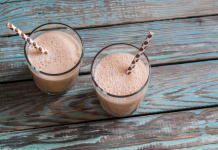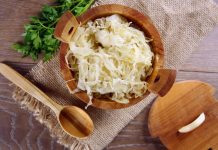
Infants are prone to infections as they have a weak immune system. Bacterial, viral, fungal and yeast infections are a few common problems, which can cause harm to infants as their defense against infections is not well developed. One such common infection in babies is thrush which occurs largely in the form of oral thrush. It is caused by the overgrowth of a fungal yeast called Candida albicans. Most people have Candida in their mouth and digestive tracts, and this amount is controlled by a healthy immune system and good bacteria in the body.
Symptoms
Thrush appears as whitish velvety spots on the sides and roof of the mouth or on the tongue. When wiped, the spots remain. Scraping may cause slight bleeding. Babies with thrush get uncomfortable when feeding.
Causes
An infant's immune system is not fully developed. As a result, yeast present in the digestive tract can overgrow and lead to infection. Thrush can also result when infants or breastfeeding mothers are exposed to antibiotics. Antibiotics reduce the level of healthy bacteria in the system, which usually control yeast growth. Mother and infant can pass the infection to each other – baby can pass thrush to mothers if when breastfeeding causing an infection on the nipples, and mothers to the baby if she has developed an infection on the nipple.
Treatment
Thrush usually goes away on its own without treatment, but there is a chance that the infection may reoccur. If not treated properly the infection may spread on to hands or clothing, so it is always best to take proper care. Here are three ways to treat thrush in infants.
Read more about preventing yeast infections naturally
1. Home Remedies:
It is said that home remedies are the best way to cure diseases. Here are some remedies for infant thrush:
- Sodium Bicarbonate/Baking Soda: Treating mild thrush with baking soda is an effective treatment for infant thrush. Boil a cup of drinking water and allow it to settle to room temperature. To this add about half teaspoon of baking soda. Mix the water well. Into this solution, dip a cotton swab and wipe baby’s mouth – lips, cheeks and roof. Make sure that each time you wipe, you use a fresh swab.
- Tea Tree Oil: Tree tree is an essential oil which has various antibacterial and antifungal properties. Boil and cool some water, and add 1-2 drops of tea tree oil. This water can be used to rinse the baby’s bottom, in the case of thrush-caused diaper rash. For oral thrush, cotton swabs can be dipped in the solution and applied to the affected areas. Make sure that each time you wipe, you use a fresh swab.
- Grapefruit Seed Extract: Dilute 7-8 drops of the extract with 1 oz distilled water. Use a cotton swab and apply to the affected areas. Grapefruit seed extract is bitter but an effective method to eliminate infection.
- Plain Yogurt/Probiotics: Plain yogurt or probiotic milk, like Bio-K+, will help to increase the amount of good bacteria which in turn controls yeast in digestive system.
Note: Consult a doctor before treatment.
2. Antifungal Medicines:
The treatment of thrush often involves antifungal medications. Gentian Violet, Nystatin, and Clotrimazole are a few antifungal medicines prescribed by doctors.
- Gentian Violet: Gentian Violet appears in the form of a purple dye. Babies mouthsshould be coated with a 1% Gentian Violet solution once or twice aday concentrating on the areas with visible thrush.
- Nystatin: It is commonly used to treat infant thrush, as it is effective in most cases. The liquid form of Nystatin is directly applied on the thrush using swab. It is also seen in the form of a cream which is usually applied to pacifiers, bottle nipples, and the mother's nipples if she is breastfeeding.
- Clotrimazole: This is a strong antifungal medicine. If Nystatin treatment fails, then Clotrimazole creams may be prescribed and should only be applied on the baby's bottom or mother’s nipple.
Note: These medicines should only be used according to a doctor’s advice.
3. General Recommendations:
Here are few general ways to prevent and treat thrush in babies:
- Avoid the intake of antibiotics, as they can trigger and worsen an infection.
- Avoid sugar as it triggers yeast growth. If babies get too much sugar through breastmilk, it may increase the infection.
- Sterilize pacifiers, toys, bottles and breast pumps. Also breastfeeding mothers should keep nipples clean and dry.
- During an infection, paper towels are best for drying hands as they can be discarded (moist towels give way for yeast growth).
- Be hygienic. Wash hands before touching babies or their materials.
Read more about how to reduce the spread of germs
Written by Aradhana Pandey
From Aradhana: "I am Aradhana. I am a passionate writer and love to write on topics like parenting, wellness, health and lifestyle. I believe good health is the key to success and happiness. I am a contributor for Natural News, Elephant Journal, Naturally Savvy and Momjunction. Through my writings, I want to motivate people to develop healthy habits and adopt natural ways of living to achieve sound health."










